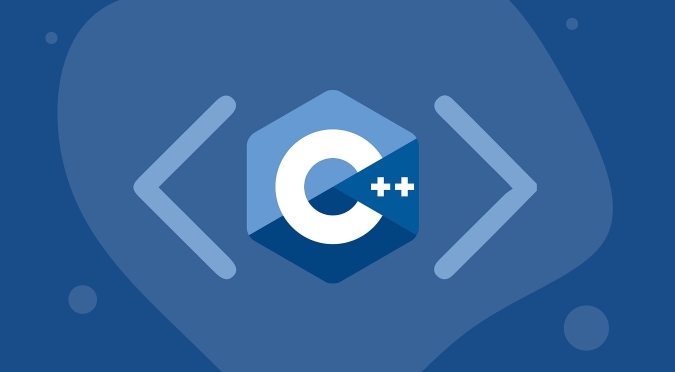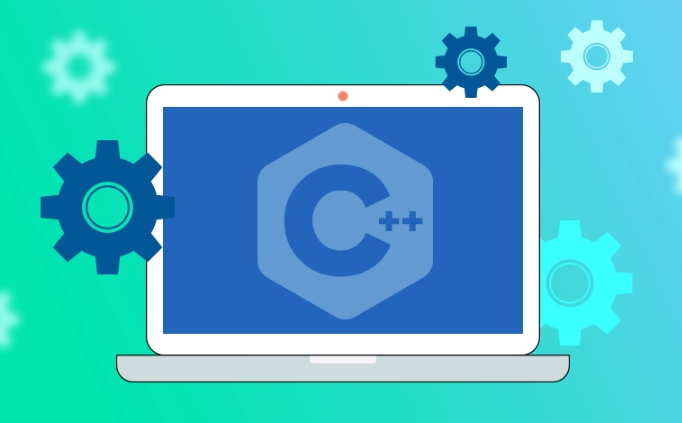C's static member variables and functions belong to classes rather than objects and are shared among all instances. static member variables are used to save the status information of the class. For example, object counting, which must be defined outside the class, such as counting the number of objects created; static member functions can access static members, suitable for tool methods, singleton mode and other scenarios, but cannot access non-static members; when using it, you need to pay attention to issues such as initialization order, life cycle, thread safety, and access permissions; typical applications include object counting, global configuration management, tool classes, singleton mode and resource cache.

C's static member variables and functions are shared resources at the class level and do not depend on object instances. That is to say, no matter how many objects are created, the static member has only one copy and is shared by all objects. This is very practical in designing tool classes, counters, singleton modes and other scenarios.

What are static member variables?
static member variable belongs to the entire class, not an object of the class. It is shared among all objects of the class and is often used to save the status information of the class.

For example, if you want to count how many objects a certain class has created:
class MyClass {
private:
static int count; // Declare public:
MyClass() { count; }
static int getCount() { return count; }
};
int MyClass::count = 0; // Definition In this way, every time a MyClass object is constructed, count will increase automatically. You can access directly through the class name: MyClass::getCount() .

Note: The static variable must be defined separately outside the class, otherwise an error will be reported during linking.
What is the function of static member functions?
static member functions can only access static member variables and other static functions. They do not have this pointer, so they cannot access non-static members.
Uses include:
- Provides functionality that is related to a class but does not require object context
- Access static data
- Implement factory methods, singleton and other design models
For example:
class Logger {
private:
static std::string logFile;
public:
static void setLogFile(const std::string& file) { logFile = file; }
static void log(const std::string& message) {
std::ofstream out(logFile, std::ios::app);
out << message << std::endl;
}
}; In this example, both log and setLogFile are static functions that can control log behavior globally without instantiating objects.
What should I pay attention to when using static members?
There are several common pitfalls to be paid attention to when using static members:
- Initialization order problem : The initialization order of static variables in different translation units is uncertain, which may lead to undefined behavior.
- Lifecycle management : static variables are destroyed at the end of the program. If complex resource management is involved (such as file handles, network connections), you must be handled with caution.
- Thread safety : Multiple threads modify static members at the same time may cause race conditions, and it is recommended to add locks or use atomic operations to protect them.
- Access permissions : Even if declared as private, static members can still be accessed through friend or public functions.
If you define the inline const or constexpr static variable in a header file, it can be initialized directly within the class without additional definitions.
What are the applicable scenarios for static members?
Some typical usage scenarios include:
- Object counter : records the number of instances of a certain class.
- Global configuration/state management : such as game settings, log switches, etc.
- Tool function collection : general functions such as mathematical operations and string processing.
- Singleton pattern implementation : Use static function to return a unique instance.
- Resource cache : such as database connection pool, image cache, etc.
To give a simple example:
class MathUtils {
public:
static int square(int x) { return x * x; }
static double pi() { return 3.1415926; }
}; This kind of tool class usually does not require instantiation, just call it directly: MathUtils::square(5);
Basically that's it. static members are not particularly difficult to understand, but details are easily overlooked in actual development, especially initialization and multithreading aspects. Rational use can improve the code structure, while excessive use may cause problems such as high coupling and difficulty in testing.
The above is the detailed content of C static member variables and functions. For more information, please follow other related articles on the PHP Chinese website!

Hot AI Tools

Undress AI Tool
Undress images for free

Undresser.AI Undress
AI-powered app for creating realistic nude photos

AI Clothes Remover
Online AI tool for removing clothes from photos.

Clothoff.io
AI clothes remover

Video Face Swap
Swap faces in any video effortlessly with our completely free AI face swap tool!

Hot Article

Hot Tools

Notepad++7.3.1
Easy-to-use and free code editor

SublimeText3 Chinese version
Chinese version, very easy to use

Zend Studio 13.0.1
Powerful PHP integrated development environment

Dreamweaver CS6
Visual web development tools

SublimeText3 Mac version
God-level code editing software (SublimeText3)
 How to develop AI-based text summary with PHP Quick Refining Technology
Jul 25, 2025 pm 05:57 PM
How to develop AI-based text summary with PHP Quick Refining Technology
Jul 25, 2025 pm 05:57 PM
The core of PHP's development of AI text summary is to call external AI service APIs (such as OpenAI, HuggingFace) as a coordinator to realize text preprocessing, API requests, response analysis and result display; 2. The limitation is that the computing performance is weak and the AI ecosystem is weak. The response strategy is to leverage APIs, service decoupling and asynchronous processing; 3. Model selection needs to weigh summary quality, cost, delay, concurrency, data privacy, and abstract models such as GPT or BART/T5 are recommended; 4. Performance optimization includes cache, asynchronous queues, batch processing and nearby area selection. Error processing needs to cover current limit retry, network timeout, key security, input verification and logging to ensure the stable and efficient operation of the system.
 C bit manipulation example
Jul 25, 2025 am 02:33 AM
C bit manipulation example
Jul 25, 2025 am 02:33 AM
Bit operation can efficiently implement the underlying operation of integers, 1. Check whether the i-th bit is 1: Use n&(1
 C function example
Jul 27, 2025 am 01:21 AM
C function example
Jul 27, 2025 am 01:21 AM
Functions are the basic unit of organizing code in C, used to realize code reuse and modularization; 1. Functions are created through declarations and definitions, such as intadd(inta,intb) returns the sum of the two numbers; 2. Pass parameters when calling the function, and return the result of the corresponding type after the function is executed; 3. The function without return value uses void as the return type, such as voidgreet(stringname) for outputting greeting information; 4. Using functions can improve code readability, avoid duplication and facilitate maintenance, which is the basic concept of C programming.
 C decltype example
Jul 27, 2025 am 01:32 AM
C decltype example
Jul 27, 2025 am 01:32 AM
decltype is a keyword used by C 11 to deduce expression types at compile time. The derivation results are accurate and do not perform type conversion. 1. decltype(expression) only analyzes types and does not calculate expressions; 2. Deduce the variable name decltype(x) as a declaration type, while decltype((x)) is deduced as x due to lvalue expression; 3. It is often used in templates to deduce the return value through tail-set return type auto-> decltype(t u); 4. Complex type declarations can be simplified in combination with auto, such as decltype(vec.begin())it=vec.begin(); 5. Avoid hard-coded classes in templates
 C fold expressions example
Jul 28, 2025 am 02:37 AM
C fold expressions example
Jul 28, 2025 am 02:37 AM
C folderexpressions is a feature introduced by C 17 to simplify recursive operations in variadic parameter templates. 1. Left fold (args...) sum from left to right, such as sum(1,2,3,4,5) returns 15; 2. Logical and (args&&...) determine whether all parameters are true, and empty packets return true; 3. Use (std::cout
 C range-based for loop tutorial
Jul 27, 2025 am 12:49 AM
C range-based for loop tutorial
Jul 27, 2025 am 12:49 AM
C's range-basedfor loop improves code readability and reduces errors by simplifying syntax. Its basic structure is for(declaration:range), which is suitable for arrays and STL containers, such as traversing intarr[] or std::vectorvec. Using references (such as conststd::string&name) can avoid copy overhead and can modify element content. Notes include: 1. Do not modify the container structure in the loop; 2. Ensure that the range is effective and avoid the use of freed memory; 3. There is no built-in index and requires manual maintenance of the counter. Mastering these key points allows you to use this feature efficiently and safely.
 C binary search tree example
Jul 28, 2025 am 02:26 AM
C binary search tree example
Jul 28, 2025 am 02:26 AM
ABinarySearchTree(BST)isabinarytreewheretheleftsubtreecontainsonlynodeswithvalueslessthanthenode’svalue,therightsubtreecontainsonlynodeswithvaluesgreaterthanthenode’svalue,andbothsubtreesmustalsobeBSTs;1.TheC implementationincludesaTreeNodestructure
 C call python script from C example
Jul 26, 2025 am 07:00 AM
C call python script from C example
Jul 26, 2025 am 07:00 AM
Calling Python scripts in C requires implementation through PythonCAPI. First, initialize the interpreter, then import the module and call the function, and finally clean up the resources; the specific steps are: 1. Initialize the Python interpreter with Py_Initialize(); 2. Load the Python script module with PyImport_Import(); 3. Obtain the objective function through PyObject_GetAttrString(); 4. Use PyObject_CallObject() to pass parameters to call the function; 5. Call Py_DECREF() and Py_Finalize() to release the resource and close the interpreter; in the example, hello is successfully called






